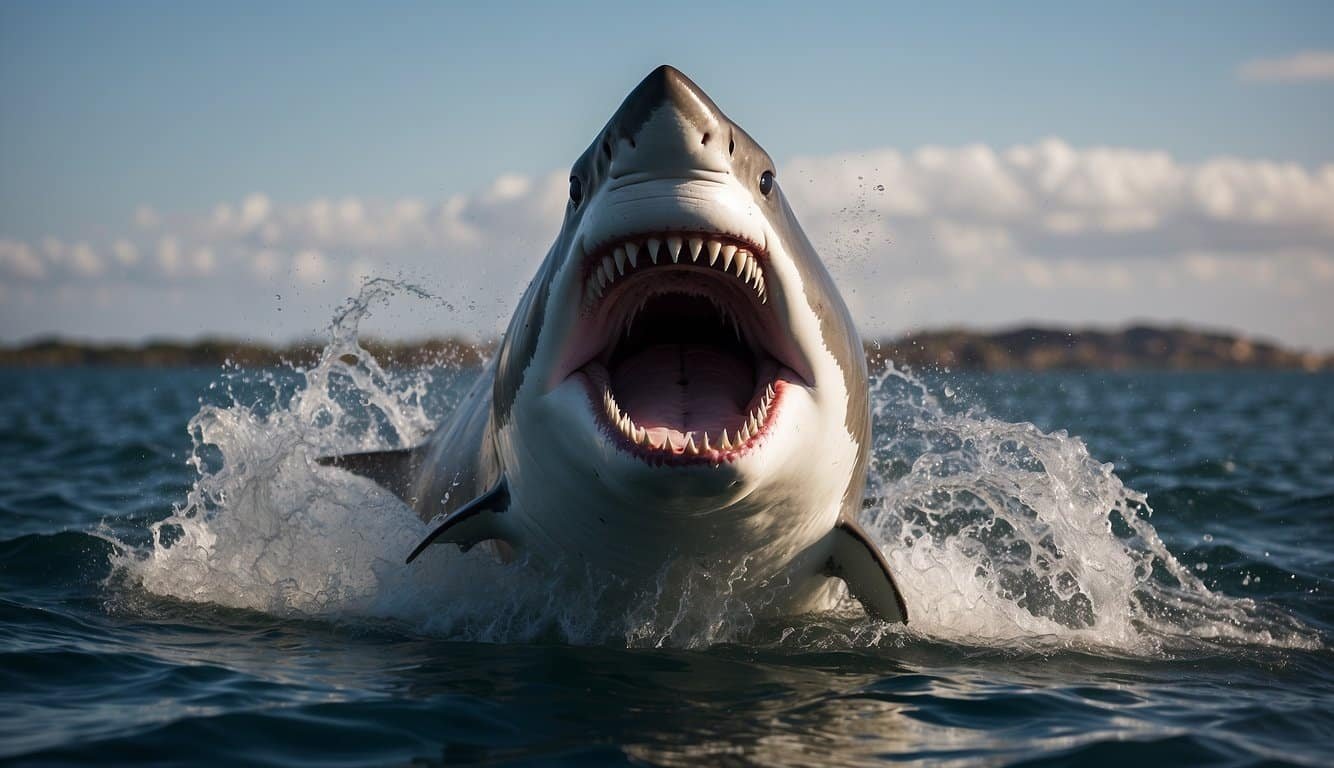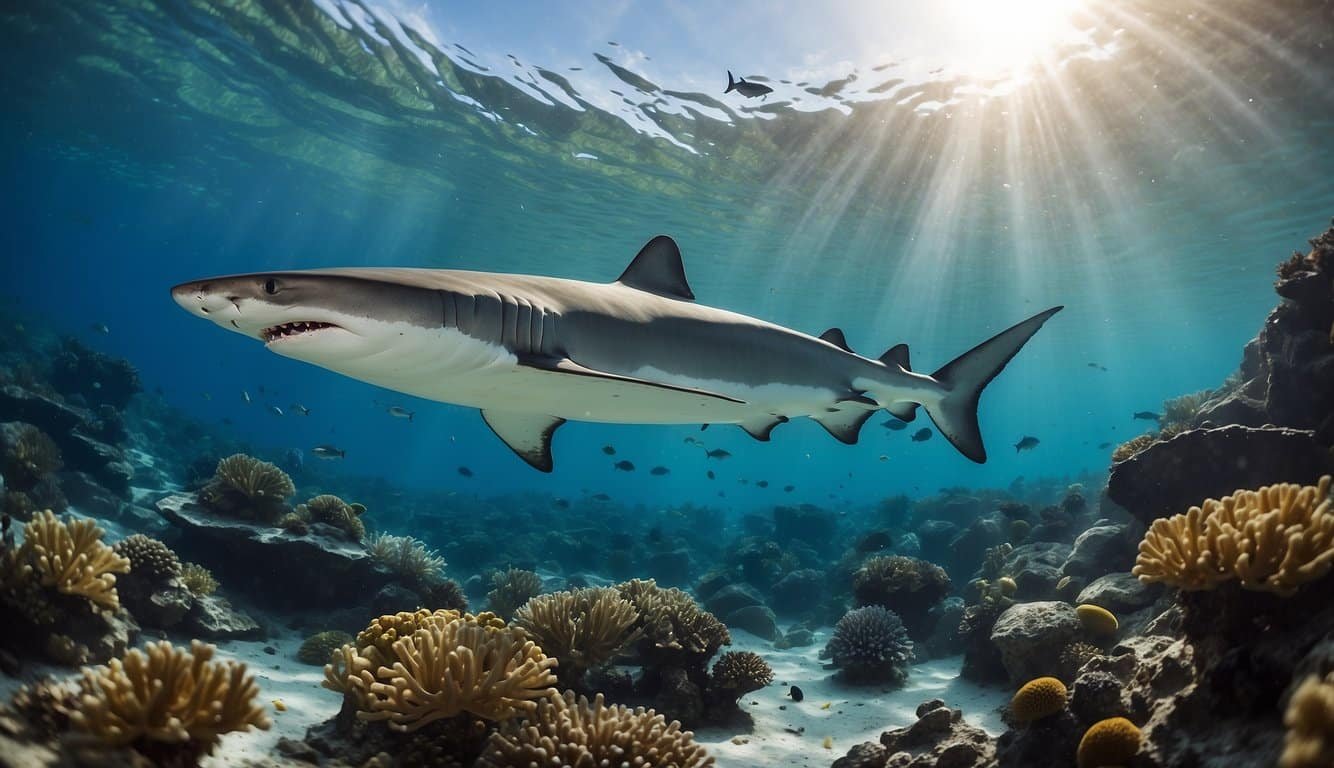Understanding Shark Shows
Shark shows have evolved into a captivating blend of entertainment and education, engaging audiences with the mysterious world of these marine predators.
Historical Highlights
Shark-related programming took a cinematic leap in the 1970s with the release of the blockbuster film Jaws. This movie sensationalized shark attacks and sparked both fear and fascination in viewers. Over the years, this initial intrigue has been nurtured by various television events, most notably Discovery Channel’s Shark Week. Launched in 1988, Shark Week remains a highly anticipated annual event, dedicating a week to exclusive shark-based content.
Notable Channels and Platforms
Various channels and platforms have expanded their offerings to include shark content beyond Shark Week. National Geographic, for instance, hosts an annual event called SharkFest, providing audiences with science-backed documentaries and insights into shark behavior. On the streaming front, platforms like Hulu and Discovery+ enable viewers to dive into shark shows on demand. For those opting for live TV, Hulu with Live TV offers a diverse selection. For international viewers, using a service like ExpressVPN can provide access to geo-restricted content. Meanwhile, YouTube TV and Sling TV are standout options for live streaming channels like CNN, TNT, and the Science Channel. Whether looking to stream past episodes of Shark Week: Off The Hook or catch recent installments on Discovery Channel, there’s a platform to satisfy every shark enthusiast.
Iconic Shark Shows and Documentaries

Shark shows and documentaries have captivated audiences with thrilling encounters, deep-sea mysteries, and groundbreaking research. From high-adrenaline pursuits to conservation efforts, these programs offer a shark’s-eye view of underwater worlds.
Cult Classics and New Discoveries
Shark Week, a staple in shark entertainment, has presented audiences with memorable shows such as “Air Jaws: Final Frontier,” depicting the awe-inspiring leaps of great whites. Meanwhile, “Alien Sharks: Strange New Worlds” uncovers the enigmatic lives of less-known shark species, showcasing their unique adaptations. Viewers can join the adventure with trailblazers like Forrest Galante or Dr. Austin Gallagher to encounter mighty predators like the mako shark in “Dawn of the Monster Mako” or the formidable tiger sharks in the depths of Western Australia.
Notable Shows:
- “Air Jaws: Final Frontier”
- “Alien Sharks: Strange New Worlds”
- “Dawn of the Monster Mako”
- “Monster Hammerheads: Killer Instinct”
Key Regions Explored:
- Australia
- Western Australia
- New Zealand
- Bermuda Triangle
Behind-the-Scenes and Key Figures
The success of shark documentaries often hinges on the passion and expertise of individuals like Andy Casagrande, Dickie Chivell, and Brandon McMillan, who bring sharks closer to viewers without leaving their living rooms. In “Mako Mania: Battle for California,” passionate experts dive headfirst into the thrills of tracking the swift mako shark. Meanwhile, “The Haunting of Shark Tower” features remarkable efforts to uncover secrets of the deep with life-size whale decoys off the coast of Canada.
Influential Contributors:
- Andy Casagrande (Cinematographer)
- Dickie Chivell (Shark Expert)
- Dr. Tristan Guttridge (Marine Biologist)
**Groundbreaking Research:
- “Mako Mania: Battle for California”
- “The Haunting of Shark Tower”
Engaging narratives, coupled with the sheer dedication of these individuals, bring the ocean’s giants right before our eyes, fostering a deeper appreciation for these majestic marine creatures.
Shark Conservation and Impact

Shark conservation is critical as it helps maintain the balance of marine ecosystems. Efforts around the globe have seen both setbacks and victories, with public perception playing a significant role in the matter.
Challenges and Triumphs
Challenges:
Conservationists face an uphill battle, including overcoming the negative image of sharks perpetuated by sensationalist media. For instance, the great white shark is often villainized due to its portrayal in films and television. This perception has contributed to the species being hunted and their numbers declining. Popular events like Shark Week on Discovery Channel have been scrutinized for sometimes emphasizing the more frightening aspects of sharks rather than focusing on conservation messages.
Additionally, locations known for their shark populations, like Gansbaai in South Africa or the waters of Western and South Australia, are facing issues like overfishing and habitat loss. Meanwhile, tiger sharks, often found in places like the Bermuda Triangle or off the coast of the UK, are threatened by both targeted fishing and bycatch.
Triumphs:
Despite these challenges, there have been significant strides in shark conservation. The shift in public perception due to increased awareness and education has led to more robust conservation efforts. Studies, such as the one from National Geographic, have indicated that when people are educated about the plight of sharks, they become more concerned and supportive of conservation initiatives.
In particular, the impact of media on shark conservation is highlighted by research suggesting that when individuals consume content that spotlights the decreasing populations of sharks, they take notice and are moved to action. Events such as “Shark Friday” to “Shark Sunday” on channels like National Geographic during July 23 encourage this educational approach, often featuring documentaries that foster a greater understanding of the importance of sharks in marine ecosystems.
Shark conservation programs have also moved beyond simple awareness and have seen real-world impacts in places like Egypt, where shark diving tourism has become a method of promoting conservation. By showing the economic benefits of living sharks, initiatives in these regions have managed to garner local and international support for the protection of sharks.

